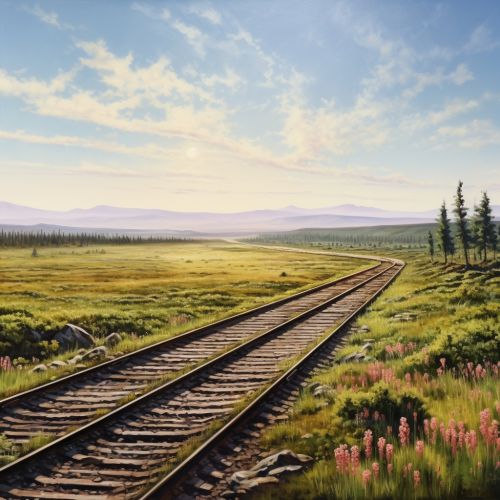Trans-Siberian Railway
Overview
The Trans-Siberian Railway is a network of railways connecting Moscow with the Russian Far East. With a length of 9,289 kilometers (5,772 miles), it is the longest railway line in the world. The railway was built between 1891 and 1916 under the supervision of Russian government ministers who were personally appointed by Tsar Alexander III and his son, Tsar Nicholas II.


History
The history of the Trans-Siberian Railway is deeply intertwined with the history of Russia itself. It was conceived as a means of connecting the vast expanses of the Russian Empire, facilitating the transportation of goods and people across the country. The construction of the railway was a monumental task, requiring the labor of hundreds of thousands of workers and the overcoming of numerous geographical and logistical challenges.
Planning and Construction
The idea for a railway that would span the entire width of Siberia was first proposed in the mid-19th century. However, it was not until the reign of Tsar Alexander III that plans for the railway were seriously considered. The Tsar saw the railway as a means of consolidating his rule over the remote regions of Siberia and the Far East, as well as facilitating the export of valuable resources from these areas.
Construction of the railway began in 1891, with the laying of the first tracks in Vladivostok. The project was overseen by the Ministry of Ways and Communications, with Sergei Witte, then Minister of Finance, playing a key role in securing funding for the project.
Completion and Expansion
The main route of the Trans-Siberian Railway was completed in 1916, with the opening of the Amur Railway, which connected the Siberian network with Vladivostok. This marked the completion of a continuous railway line from Moscow to the Pacific Ocean.
In the years following its completion, the Trans-Siberian Railway was expanded and modernized. New branches were added, including the Baikal-Amur Mainline, which runs parallel to the original Trans-Siberian line but further north, and the Trans-Mongolian and Trans-Manchurian lines, which provide connections to Mongolia and China, respectively.
Route
The Trans-Siberian Railway follows a route that spans the entire width of Russia, from Moscow in the west to Vladivostok in the east. The route passes through a diverse range of landscapes, from the dense forests of European Russia, across the vast steppes of Siberia, to the rugged mountains of the Russian Far East.
The railway is divided into several sections, each of which presents its own unique challenges and features. These include the Ural Mountains, the world's longest continuous mountain range, and Lake Baikal, the world's deepest and oldest freshwater lake.
Impact
The Trans-Siberian Railway has had a profound impact on the development of Russia. It has facilitated the transportation of goods and people across the country, contributing to the economic development of the regions it passes through. It has also played a key role in the country's military strategy, providing a vital transport link during times of conflict.
See Also
History of rail transport in Russia Siberia Vladivostok Tsar Alexander III Tsar Nicholas II Sergei Witte
